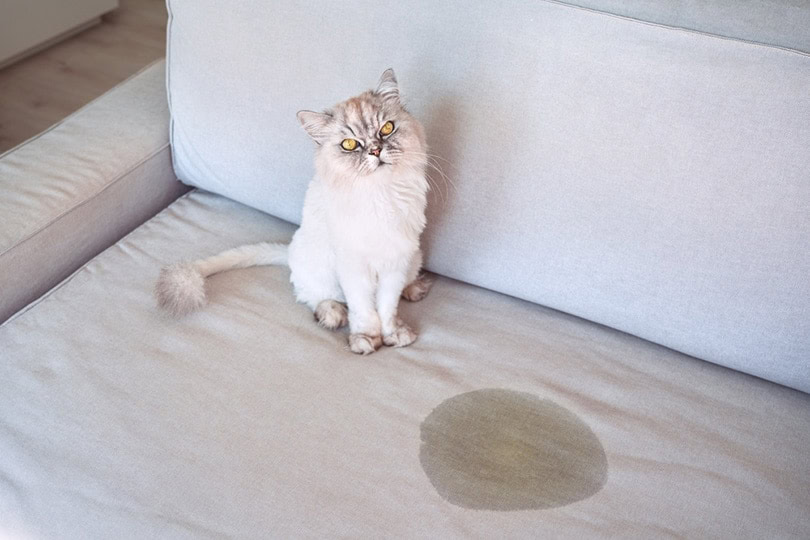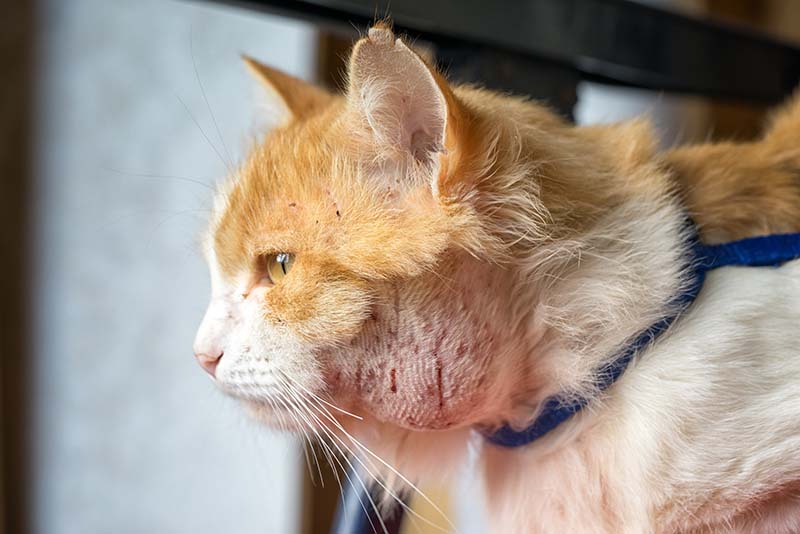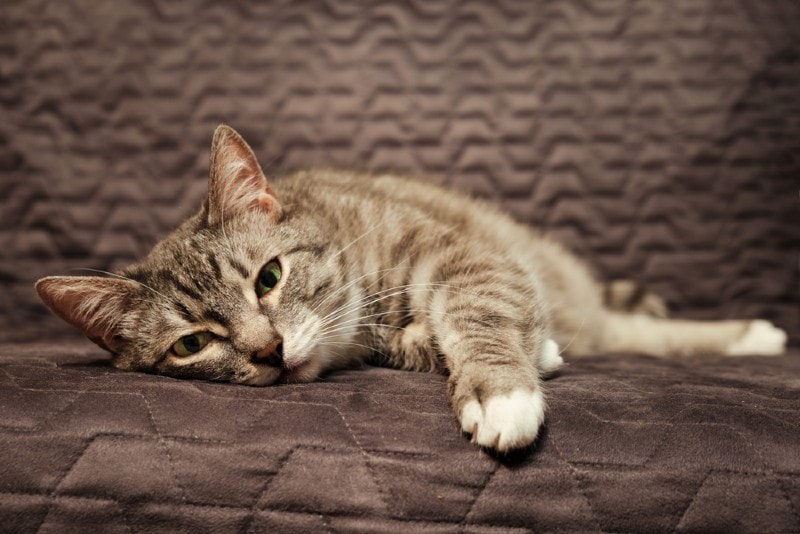VET APPROVED

The information is current and up-to-date in accordance with the latest veterinarian research.
Learn more »If you look in your cat’s litter box and see foamy urine, you’re bound to have questions. Is foamy cat urine anything to be concerned about, what causes it, and what can you do? There are several underlying causes for your cat to have foamy or frothy urine, but the main reason is that there’s extra protein in their urine, known as proteinuria.
This article will go over the causes of foamy urine.

The 8 Causes of Foamy Cat Urine
1. Urinary Tract Infection
One of the most common causes of proteinuria is a urinary tract infection (UTI) or urinary tract inflammation. Bacterial infections of the urinary tract are fairly uncommon in cats (although they certainly do happen), but sterile inflammation of the urinary tract (usually known as Feline Lower Urinary Tract Disease) is very common. Infectious and inflammatory conditions can cause significant inflammation in the kidneys, ureters, bladder, and urethra.
With inflammation in any of these urinary tract areas, your cat could have excess protein in their urine, usually in the form of blood, cells or bacteria (made up of protein). Some urinary infections are especially bad and can make your cat systemically ill, with a fever and lethargy.
Treatment
Most urinary tract infections need antibiotics to treat them. Your veterinarian may recommend a urine culture, particularly if your cat has had multiple UTIs. If your vet suspects an inflammatory condition rather than an infectious one, they may use anti-inflammatories, such as Onsior, to treat signs associated with discomfort and inflammation. They may also want to check your cat’s urine for any signs of crystals (more on this below!)
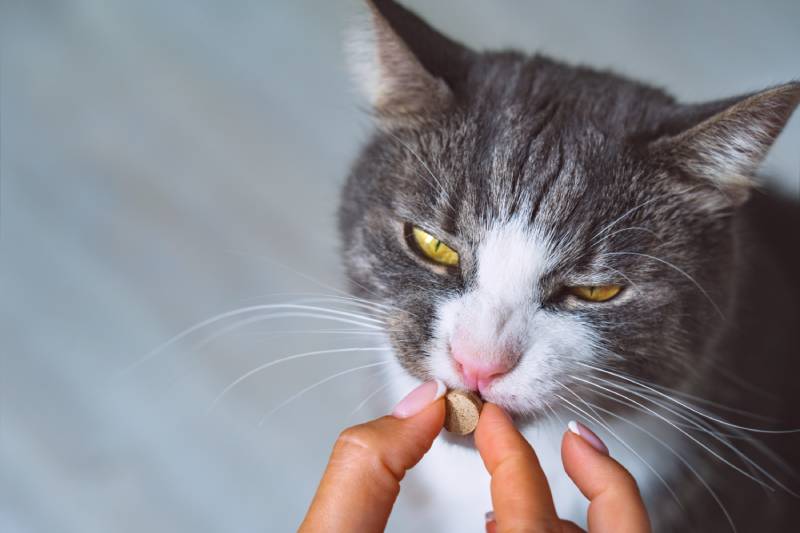
2. Urinary Crystals or Stones
Bladder stones (uroliths), kidney stones (nephroliths), and urinary crystals (crystalluria) can all contribute to inflammation within your kitty’s urinary tract. The stones can form secondary to infections, but they can also occur when your cat eats things that alter the pH of their urine.
Treatment
In many cases, your cat’s diet can dissolve stones and crystals. Commonly used foods include Hill’s c/d and Royal Canin SO. Surgery is sometimes needed to remove bladder stones before they can cause a urinary obstruction.
3. Feline Idiopathic Cystitis
Feline idiopathic cystitis is a condition with inflammation of the bladder but no clear-cut cause, such as a urinary tract infection. Stress can be a significant trigger for this condition. Affected cats may show a range of signs:
- Straining to urinate
- Frequently urinating (pollakiuria)
- Bloody urine (hematuria)
- Inappropriate urination
Treatment
The primary treatment for feline idiopathic cystitis is reducing your cat’s stress. Certain foods, such as Hill’s c/d Multicare Stress, could help with this, but you can also provide enrichment opportunities and decrease conflict between cats in the house. You should also implement changes slowly to reduce the possibility of them triggering a flare-up in your kitty.
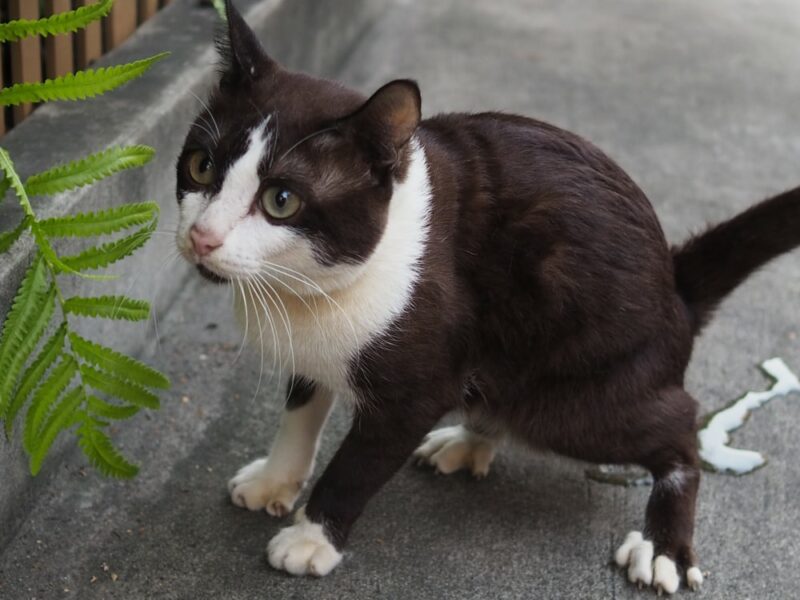
4. Urinary Tract Polyps or Tumors
Polyps or tumors in the bladder can cause inflammation and bleeding. One type of tumor, transitional cell carcinoma, can be malignant.
Treatment
Based on their location in the bladder, some bladder tumors and polyps are more amenable to surgical removal than others. Your vet might also prescribe anti-inflammatory medications to help slow the tumor’s growth and decrease clinical signs.
5. High-Protein Diets
While cats are obligate carnivores and need a high-protein diet, too much protein can spill over into your cat’s urine as the kidneys work to filter the large protein molecules. These diets could lead to frothy urine.
Treatment
If your veterinarian rules out infections but sees higher protein levels in your cat’s urine, they’ll probably ask about your cat’s diet. They can work with you to find an appropriate, slightly lower-protein diet for your cat.
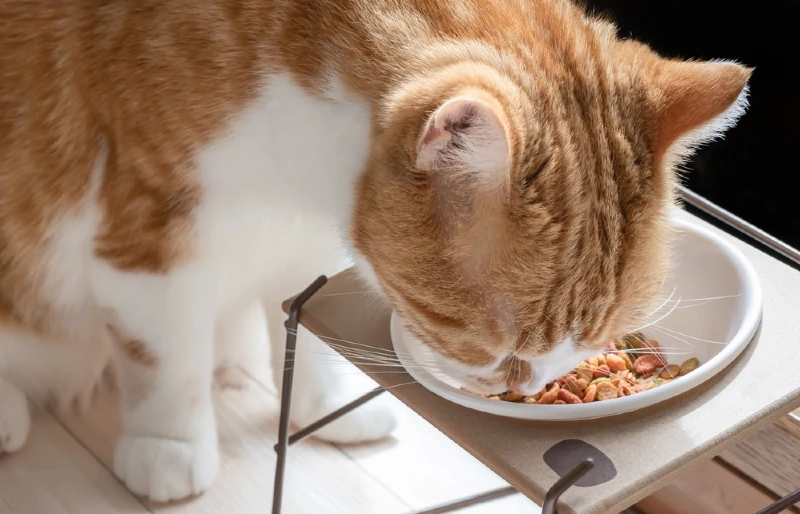
6. Hypertension
Hypertension or high blood pressure can cause many problems in your cat. It can cause elevated protein levels, contributing to foamy-looking urine. Hypertension can also cause retinal damage and subsequent blindness.
Treatment
Your veterinarian must check your cat’s blood pressure to diagnose hypertension. If it is high, they’ll consider medication options to lower it, such as amlodipine. They will also look for a cause of hypertension, such as kidney disease or hyperthyroidism.
7. Hyperthyroidism
Older cats are at a higher risk of becoming hyperthyroid, where the thyroid gland overproduces the hormone, usually due to a benign adenoma in the thyroid gland. This condition can make your cat lose weight, eat more, vomit, have higher blood pressure, and cause cardiac changes.
Treatment
You and your vet have a number of treatment options to consider for your hyperthyroid cat. There are medications like methimazole that decrease thyroid levels. Food like Hill’s y/d is another option as it has a low iodine content (iodine is needed to produce thyroid hormone). Surgery and radioactive iodine treatments, respectively, remove or destroy the thyroid gland and eliminate hyperthyroidism.
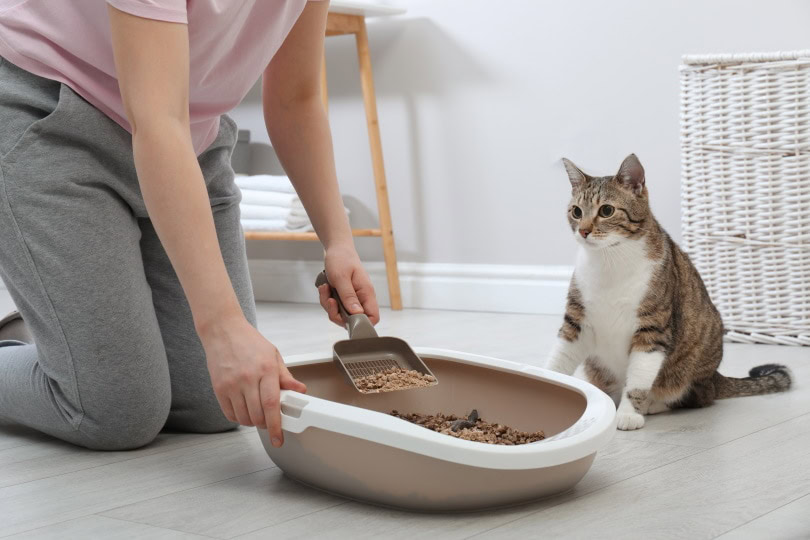
8. Kidney Failure or Disease
Kidney disease is typically chronic, taking place over months or years. However, you may not see any signs until 67% to 70% of the kidneys are damaged. An estimated 81% of cats over 15 years of age will develop kidney disease
Many cats with kidney disease develop proteinuria because the kidneys become less efficient at filtering out proteins, and thus, they can leak through into the urine. So you might see foamy urine in the litter box, giving you a clue that something isn’t quite right. Kitties also usually lose weight, drink more, have a decreased appetite, and lose muscle mass. They may be more at risk for developing urinary tract infections as well.
Treatment
Typically, treatments for chronic kidney failure manage the symptoms. Affected cats may need fluid therapy to keep them hydrated because kidney disease causes chronic and inappropriate fluid loss through the urine. Appetite stimulants, such as Elura (capromorelin) and mirtazapine, can help keep your kitty eating.
Therapeutic diets are one of the mainstays of managing chronic kidney disease. They have less protein and lower sodium and phosphorus levels. Some examples of kidney therapeutic diets include:
- Hill’s k/d
- Royal Canin Renal Support
- Purina Pro Plan Veterinary Diet NF
Proteinuria can worsen kidney disease, so your veterinarian may prescribe a medication like enalapril to help reduce proteinuria. Elevated blood pressure can also be a problem, so medications like amlodipine are often used.
Do you still have questions about your cat’s urinary behaviors? Our vets can help!

Frequently Asked Questions (FAQ)
What Does Normal Cat Urine Look Like?
Normal cat urine is clear and yellow, often described as pale yellow or straw yellow. If the urine is cloudy or hard to see through, there could be cellular material such as red blood cells, white blood cells, or bacteria.
How Can You Tell if Your Cat’s Urine Is Abnormal?
If you have any concerns about your cat’s urine or behavior around urination, contact your veterinarian, especially if you have a male cat. It’s easier for male cats to develop a urinary blockage, so they should be evaluated immediately.
Checking the litter box daily is the best way to tell if your cat has urinary issues. You might see foamy pee, blood clots in the box, or even more urine spots than usual, all of which can indicate a problem.
Even smart litter boxes can check your cat’s urine pH and help identify issues early on. You might consider it if it’s in your budget to get one.
Why Is My Cat’s Urine Drying White?
If your cat urinates on a surface and it dries but looks shiny, they could have crystals. In most cases, crystals must be diagnosed by analyzing urine under a microscope. The urinalysis will also check for evidence of an infection, glucose, which could indicate diabetes, and how well the kidneys can concentrate urine.


Conclusion
If you notice foamy urine in your cat’s litter box, your cat needs a veterinary exam. Reach out to your veterinary hospital to see if they need you to collect a sample from a clean litter pan or if they’ll attempt to get a sample themselves. There are many causes of foamy urine in cats, and your vet can help you determine if it’s something to be worried about.
- https://vcahospitals.com/know-your-pet/feline-idiopathic-cystitis
- https://www.vet.cornell.edu/departments-centers-and-institutes/cornell-feline-health-center/health-information/feline-health-topics/hyperthyroidism-cats
- https://vcahospitals.com/know-your-pet/kidney-failure-chronic-in-cats
- https://todaysveterinarypractice.com/pharmacology/mirtazapine-addressing-appetite-in-cats/
- https://todaysveterinarypractice.com/urology-renal-medicine/clinical-approach-to-proteinuria/
- https://www.avma.org/resources/pet-owners/petcare/feline-lower-urinary-tract-disease
Featured Image Credit: Creative Cat Studio, Shutterstock
Contents
- The 8 Causes of Foamy Cat Urine
- 1. Urinary Tract Infection
- 2. Urinary Crystals or Stones
- 3. Feline Idiopathic Cystitis
- 4. Urinary Tract Polyps or Tumors
- 5. High-Protein Diets
- 6. Hypertension
- 7. Hyperthyroidism
- 8. Kidney Failure or Disease
- Frequently Asked Questions (FAQ)
- What Does Normal Cat Urine Look Like?
- How Can You Tell if Your Cat’s Urine Is Abnormal?
- Why Is My Cat’s Urine Drying White?
- Conclusion
